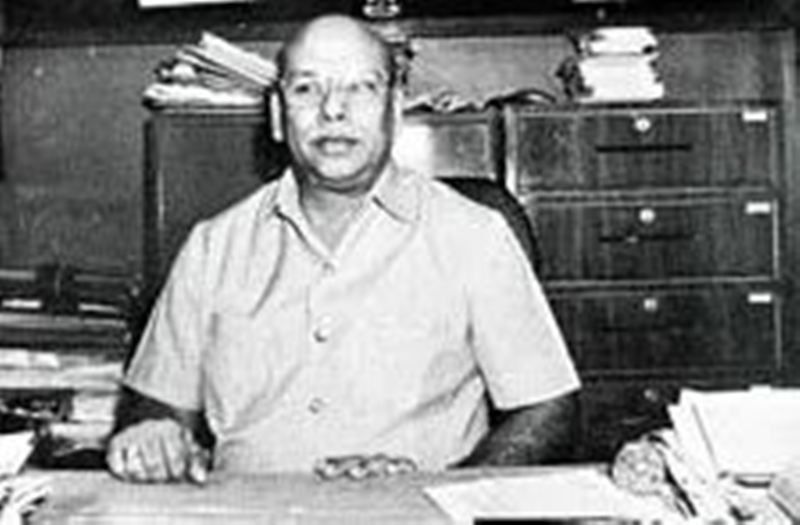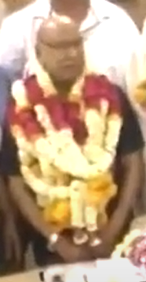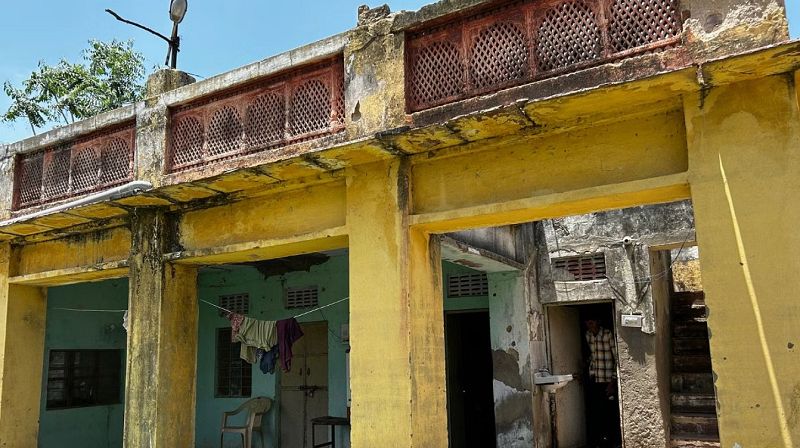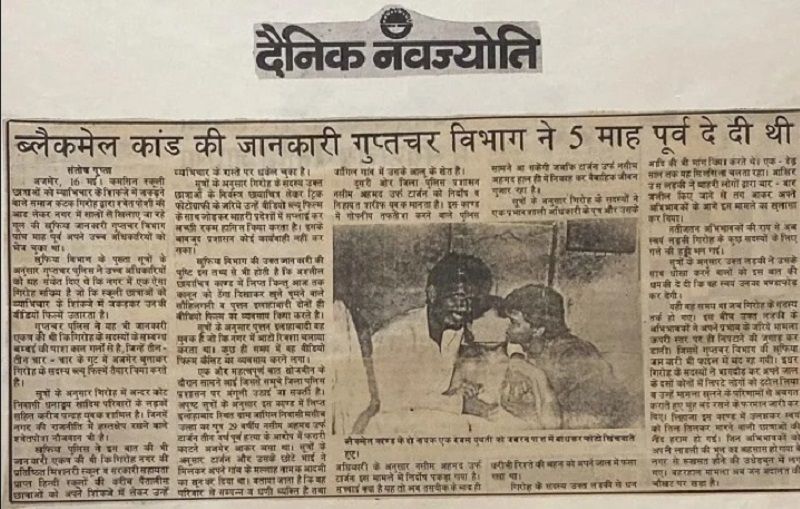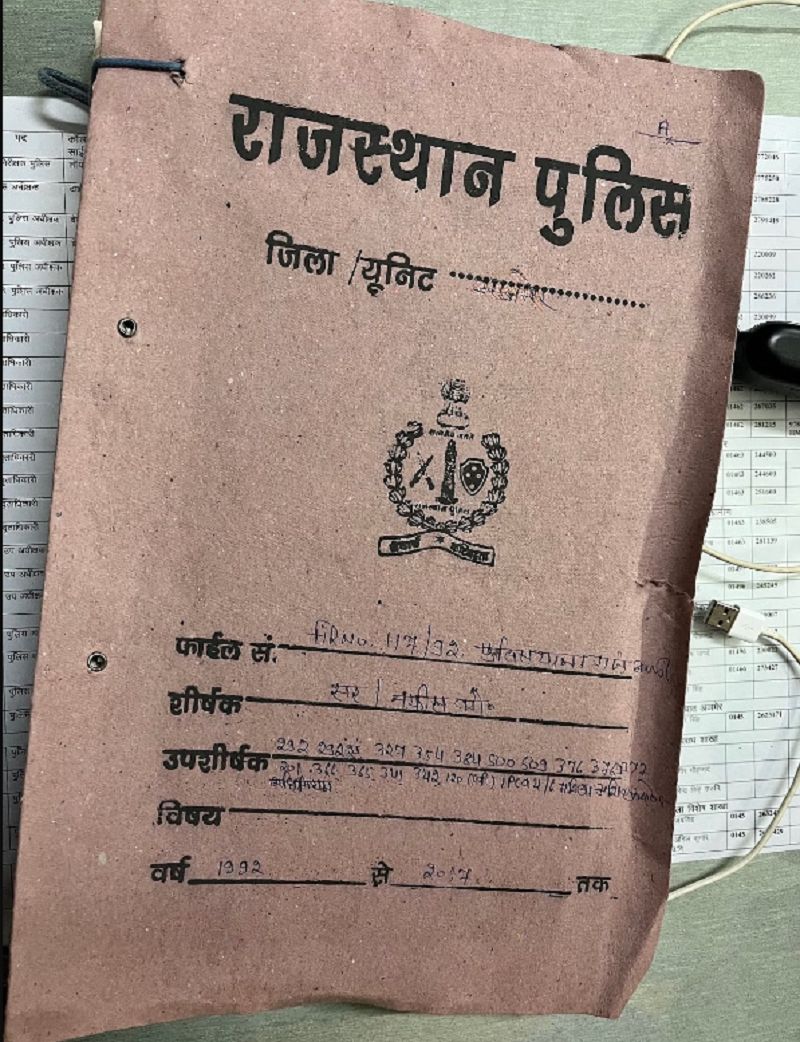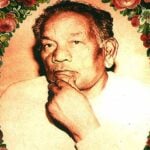Deenbandhu Chaudhary (Navajyoti) Age, Wife, Children, Family, Biography & More
Quick Info→
Hometown: Khadlai, Rajasthan
Wife: Pratibha Agarwal
Age: 86 Years
| Bio/Wiki | |
|---|---|
| Profession | Journalist |
| Famous for | Covering the story about Ajmer Rape Case held in 1992 |
| Physical Stats & More | |
| Eye Colour | Black |
| Hair Colour | Bald |
| Career | |
| Achievement | He was listed as a noteworthy newspaper publisher by Marquis Who's Who. |
| Personal Life | |
| Date of Birth | 19 December 1936 (Saturday) |
| Birthplace | Khadlai, Rajasthan |
| Age (as of 2022) | 86 Years |
| Zodiac sign | Sagittarius |
| Nationality | Indian |
| Hometown | Khadlai, Rajasthan |
| College/University | University of Rajasthan, Jaipur |
| Educational Qualification | B. Sc Mathematics |
| Relationships & More | |
| Marital Status | Married |
| Marriage Date | 11 May 1965 |
| Family | |
| Wife/Spouse | Pratibha Agarwal |
| Children | Son(s)- 2 • Narendra Chaudhary • Harsh Chaudhary Daughter- Neelima Chaudhary |
| Parents | Father- Durga Prasad Mother- Vimla Devi Chaudhary |
Some Lesser Known Facts About Deenbandhu Chaudhary
- Deenbandhu Chaudhary is an Indian journalist for the local newspaper Dainik Navajyoti and was popular for covering the story about Ajmer Rape Case held in 1992.
- He was a member of All India Newspaper Annals, Delhi, since 1957. In 1959, he was a member of the Language Newspaper Association India, Delhi and a member of the Indian Newspaper Society, Delhi. In 1990, he became the President of Ajmer Zila Patrakar Sangh, Ajmer. From 1993-1994, he was a member of the Rajasthan Telephone Advisory Committee, Jaipur. In 1993, he became a member of the Rajasthan Postal Advisory Committee, Jaipur.
- He also served as a member of the Hindi advisory board Ministry of Mines, Government of India, member of the divisional railway consultative committee, Northwest and Railway. In 1987, he became the secretary general of the Citizen’s Council, Ajmer. From 1994-1995, he was a member of the Zonal Runway Consumer Consultation Committee, Bombay. He was also a member of the zonal Consumer Consultant Committee. In 1980, he was a member of the Rotary. In 1992, he was elected as the president of Ajmer Club.
- The 1992 Ajmer Serial Gang Rape and Blackmailing Case took place in the Ajmer city of Rajasthan. According to the investigation, hundreds of college and school students were victims of the scandal. The incident came to the limelight when Navajyoti, a local paper reported about it publishing some nude images and school students being blackmailed by local gangs. The report stated that for many years till 1992, the victims were taken to a farmhouse or bungalow where they were sexually assaulted by one or several of the men. Additionally, these accused took nude and revealing photographs of the victims which were used to blackmail them. The pictures of girls used to be developed in a local photo studio – Bharosa Color Lab. After the news broke out, the police launched an inquiry into the scandal and reported that the locals were aware of the events taking place in their neighbourhood but they did not report it.
- The scandal was started by a chain of serial offenders including a group of local influential men who were targeting young girls. First, Farooq Chistee trapped one of the girls from Sophia Senior Secondary School in Ajmer and took obscene photos of her and then blackmailed her to introduce him to her classmates and friends. When she did so, he raped, sexually assaulted and took obscene pictures of them as well. This continued for a long period of time and the gang started victimizing more girls. They used to photograph the girls in compromising positions and later used the images to exploit the victims.
- Deenbandhu Chaudhary was the editor of Navajyoti at that time and stated that the local law enforcement authorities were aware of the scandal for almost a year before the story broke, but they did not take out any investigation against the politicians. Even Choudhary had doubts about publishing the story because the individuals responsible for the crime were connected to the influential ‘Khadims’ family. According to Chaudhary, he did the story because this was the only way to jab the local administration to take action.
- Eventually, the police filed an FIR against the eight accused and after some more investigation, 18 men in total were charged leading to protests and tension among locals.
- After their arrests, a three-day bandh was imposed and news about exploitation and blackmail started to spread. In a statement given by retired Rajasthan DGP Omendra Bhardwaj, who was the Deputy Inspector General of Police in Ajmer at that time, he said that the victims were afraid to speak up against the accused because of the social and financial power they held. He also said that many victims who were young and vulnerable had already committed suicide and many of them opposed the statements given in the court. It was also believed that the culprits had links to agencies like Pakistan’s ISI, PFI and Dawat-E-Islami. According to various victims, many of them faced harassment and threats and they did not get any support from society and their own families. Ajmer Mahila Samooh, who took up the case of the victims also received threats leading to their withdrawal from the case.
- All the 19 accused people were charged with kidnapping. During the investigation, it came out that the main accused Farooq Chishtee was the President of the Ajmer Youth Congress. During the beginning of the investigation, he was declared mentally unstable but was convicted by a fast-track court in Ajmer in 2007. Nafis Chishtee was the Vice-President of Ajmer Indian National Congress and Anwar Chishtee was the Joint Secretary of Ajmer Indian National Congress. Moijullah (alias Puttan), Ishrat Ali, Anwar Chishtee, and Shamshuddin (alias Meradona) were also sentenced by the court. On 4 January 2012, Saiyed Saleem Chishtee who was one of the main accused in the case was arrested by the Rajasthan police’s Special Operations Group (SOG). Another main accused, Alamas, also hid for a long time.
- In an interview, the police and women-focused NGOs said that building a case against the accused was very difficult because many victims were not willing to come forward, but the photographs and videos that were used to blackmail them helped in identifying the accused. According to various reports, thirty victims were identified but only twelve filed cases and later out of these ten of them backed out. Only two of them went forward with the case. Of the 18 who were accused of abduction and gang rape under the Indian Penal Code and Indecent Representation of Women, one of them committed suicide.
- In 2013, the Rajasthan High Court reduced the period of the sentence from life imprisonment to the period already served by him.
- In some of the police statements, it was also stated that the small-time tabloids which became very famous at that time also used to blackmail the victims because they had access to the nude images of the girls for which they sought money from the families of the victims to hide them.
- In 2013, he was invited as the Guest of Honor for the Leadership Summit 2013 held at Bhilwara at the elegant Surya Mahal.
- On 21 July 2023, a movie titled Ajmer 92, directed by Pushpendra Singh and produced by Umesh Kumar Tiwari was released in theatres.

